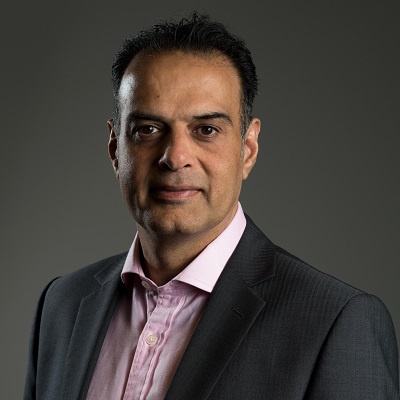By Ian Pulford, Director of Smart City Consultancy Ltd
28/03/2022
Ian Pulford from Smart City Consultancy tells us more about the possibilities of 5G and how it can impact the future of Milton Keynes.
Please tell us a bit about yourself.
I’m Ian Pulford, Director of Smart City Consultancy Limited. I left school at 16 years of age; I was interested in things like maths, puzzles and computing in those days and I joined BT as an apprentice.
I then moved into engineering and different, wider roles, and eventually spent time in Hong Kong and Japan. I was over there for eight years, and was also CEO of a joint venture. After that I got involved with BT Smart Services and sustainability for a period and was the lead on the London 2012 BT programme for delivering the Olympics.
Ten years ago I left BT and I set up a couple of companies: one communications company and one consultancy company. I was able to employ my three daughters in the communications business, it ran for four years and had about 30 staff, but unfortunately didn't work out. However, I did have a good experience and learned a lot.
What is Smart City Consultancy?
It’s in the name: Smart City Consultancy is about consulting around smart cities! Back in 2012 it was quite a new concept but I saw it as an emerging opportunity and I set up the company. Its approach involves setting up a core set of enablers at a city level and then using those to enable us to solve the challenges that exist. It’s about bringing in data sets and having the capability to work with them, then change outcomes. It’s also all about making sustainable growth a potential opportunity.
As an example of this sort of approach, I worked with Sustainable Glasgow and the Low Carbon Living Programme. We put in a bid back in 2012 for £25 million from the central government for a project called the Future Cities Demonstrator project. Unfortunately, we weren't successful because Glasgow won through the Commonwealth Games activity, but we were then able to reshape that bid and create a new one through the OU, which we won valued at £16 million. That’s where it all started.
In addition to this consultancy work, I have built an extensive network of contacts. I also run events, most recently one in Bologna, and two years ago I did an event in the Centre:MK where we brought in robots.
What does 5G mean in Milton Keynes and how does it benefit a city?
Milton Keynes is a hotbed of innovation and we've got experiences like the Starship robots and extensive rollout of electric vehicles, among other things. You can’t see 5G on its own, but you can see it as an additional capability as part of these enablers. There’s the potential to grow the test bed, giving new ways of connecting things to other things; faster, quicker but also with new core capabilities that come from 5G. So I see it as just an evolution of the test bed and the innovation capability within Milton Keynes.
What are some of the practical uses for 5G?
The current way operators are rolling out 5G is allowing you to do things faster, get downloads quicker, get more content etc. It’s a more efficient way of connecting and doing things, but the really exciting parts of 5G come from its new core functionality, which includes things such as network slicing, which is the ability to split a network. For example, with fixed networks there’s an fixed amount of capacity which has guaranteed levels of service. This means that, if you expect something to happen, it will happen, and the network is designed to make sure it happens well. With 5G network slicing means that you can slice the network up and get guaranteed levels of service for certain parts of it. If you're a business customer, network slicing becomes quite interesting as an application.
Another use that's really interesting is the low latency scenario, where latency is all about the speed it takes for you to send a message/command in one direction and for it to be acted upon. So, if you start talking about the future of mobility as a service and teleoperation, low latency is very important for these types of activities.
This is not the way the operators are doing it; they're adding 5G to their existing network and just allowing you to move from a 4G connection up to 5G one. What we're doing is purely a standalone 5G network, and that means we're very interested in the core 5G functionality and targeting business-type applications.
What’s one thing people misunderstand about working in the supply chain?
The range of jobs and opportunities available. Supply chains touch every industry and the possibilities are endless.
What soft skills are just as important in supply chain management as technical skills?
Authenticity, Integrity and Accountability is essential in management, creating that feeling of belonging and bringing people on the journey. Technical skills can be taught, but soft skills are part of our core DNA.
- Don’t be late
- Don’t ask someone to do something you wouldn’t do yourself
- Treat everyone with the same level of respect.
This interview with Saul Resnick, CEO DHL UK, shows that supply chains are evolving rapidly - powered by technology and sustainability. But it remains a people first industry full of opportunity.



